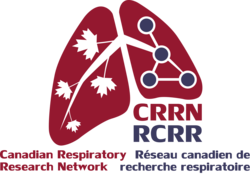2015 CRRN ERLI Recipient
Assistant Professor
Faculty of Medicine, and Collaboration for Outcomes Research and Evaluation (CORE),
The University of British Columbia
Twitter: @Mo_Safavi
CRRN Platform: Health Economics Platform
Respiratory evaluation sciences program: enabling evidence - informed decision making in respiratory medicine
This project uses administrative health databases of the province of British Columbia, Canada, to estimate the economic burden of asthma and chronic obstructive pulmonary disease (COPD), and the role of other medical conditions (comorbidities) that patients with asthma and COPD often have. In particular, the project aims at achieving the following objectives:
Primary objectives:
1. Estimate the excess cost of asthma and COPD in BC (excess costs refer to the medical costs patients with asthma and COPD incur which is over and beyond the medical costs of individuals in the general population).
Hypothesis: none; this is a descriptive objective.
2. Estimate the excess costs of co-morbidities in patients with asthma and COPD
Hypothesis: compared to the general population, individuals with asthma/COPD incur more direct medical costs due to co-morbidities than individuals without asthma/COPD
Secondary objectives:
3. Estimate the trend in costs of asthma and COPD over time
Hypothesis: the overall costs of asthma and COPD have increased in the province; the per-patient cost of COPD has increased but the per-patient cost of asthma has decreased.
4. Estimate the contribution of inpatient, outpatient, and medication costs to the economic burden of asthma and COPD and their comorbidities.
Why is the research program important?
Asthma and COPD affect a large number of Canadians and are associated with increased health-care costs, loss of jobs, reduced productivity at work, and reduced quality of life. Many individuals who are affected by asthma or COPD suffer from other health conditions (comorbidities). In particular, mental health disorders and diseases of the heart are very common in patients with asthma or COPD. Previous studies have measured the incidence and prevalence of such comorbidities. However, the economic aspects of comorbidities in asthma and COPD is much less studied. We are not aware of any recent scientific research in Canada that has estimated the economic burden of comorbidities in asthma and COPD. This has caused problems in our ability to calculate the economic impact of interventions and programs in asthma and COPD (for example, how many dollars will be saved if patients with COPD quit smoking). This is because the majority of treatments or health programs (such as advocating for more daily exercise) affect the coexisting conditions. The proposed research is one of the few studies, and the first in Canada, that estimates the economic burden of asthma and COPD, their time trend over time, and contribution of comorbidity to the burden.
What was the result of the research and what impact will it have?
In its second year, the project is actively producing new knowledge about the burden of asthma and COPD and the role of comorbidities. For example, it has shown that in only 10 years (from 2001 to 2010), the health sector costs of COPD in British Columbia have increased by nearly 50% (Khakban et. al., Chest, 2015). Similarly, we have shown that the average costs of asthma in BC has increased by 20% from 2002 to 2011 (Tavakoli et. al., Allergy, 2016). For COPD, we have shown that hospitalizations are responsible for the greatest share of costs. For asthma, on the other hand, medications were responsible for the majority of the costs. In terms of the role of comorbidities, we have demonstrated that in patients with asthma, the costs of comorbidities is up to 6 times higher than the costs of asthma itself (Chen, European Respiratory Journal, 2016). Finally, we have demonstrated that in patients with COPD with a previous diagnosis of asthma, medical costs are $540 higher per year compared with patients with COPD but without a history of asthma (Sadatsafavi, Annals of American Thoracic Society, 2016). Interestingly, in patients with COPD and a history of asthma, the costs of coexisting conditions were lower than the costs of coexisting conditions in patients with COPD alone.
Publications
Khakban A, Sin DD, FitzGerald JM, Ng R, Zafari Z, McManus B et al. Ten-Year Trends in Direct Costs of COPD: A Population Based Study. Chest 2015;148:650–646.
Sadatsafavi M, Tavakoli H, Kendzerska T, Gershon A, To T, Aaron SD et al. History of Asthma in Patients with Chronic Obstructive Pulmonary Disease: A Comparative Study of Economic Burden. Ann Am Thorac Soc Published Online First: 24 November 2015. doi:10.1513/AnnalsATS.201508-507OC
Tavakoli H, FitzGerlad JM, Chen W, Lynd LD, Kendzerska T, Aaron SD, Gershon AS, Marra CA, Sadatsafavi M. Ten-year trends in direct costs of asthma: a population-based stud (Allergy – forthcoming)
Chen W, Lynd LD, FitzGerald JM, Marra CA, Balshaw R, To T, Tavakoli H, Sadatsafavi M. Excess medical costs in patients with asthma and the role of comorbidity (European Respiratory Journal - accepted)

